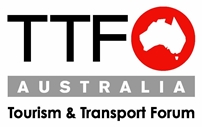
Tourism & transport industry five-point election plan to grow ACT visitor economy
The Tourism & Transport Forum Australia (TTF) has released a five-point plan to grow the ACT visitor economy over the next decade to mark the upcoming Territory Election on Saturday 15 October.
TTF’s five-point visitor economy plan calls on the next ACT Government to:
1. Boost investment in the ACT’s destination marketing by $15 million a year;
2. Attract more business events and major events to the nation’s capital;
3. Expand visitor infrastructure with new attractions such as City to the Lake;
4. Grow Canberra’s public transport network through light rail and bus reform; and
5. Improve the visitor experience by supporting reform of the Tourist Refund Scheme.
“The ACT is coming into its own as a unique visitor destination but we need to maintain the concerted effort of the Territory Government to make sure it can reach its full potential by continuing to invest in the sector,” said Margy Osmond, TTF CEO.
“In the past year we’ve seen domestic visitation to Canberra grow by 17 per cent to 2.4 million Australians and their expenditure while visiting the nation’s capital has increased by 11 per cent to $1.34 billion which is a positive result for the territory’s visitor economy.
“The concern is that the number of visitor nights has only increased by one per cent during the same period which would indicate that Canberra is attracting more people but collectively they aren’t staying as long as they potentially could be. This should be embraced by the next ACT Government as an opportunity to work with the industry to encourage these millions of Australian visitors to stay longer and experience more of what Canberra has to offer.
“On the international front, Canberra attracted 203,000 overseas visitors (up 13 per cent) who spent $420 million (up 16 per cent) and stayed 4.98 million nights (up 9 per cent). A strong performance but with plenty of potential with the commencement of international flights to Singapore and Wellington to do even better.
“The visitor economy is only as strong as our willingness to invest in its success. In an increasingly competitive and cut-throat international visitor market that means getting the message out through smart destination marketing that Canberra is a place that people need to experience. Culture and heritage tourism, which Canberra has in abundance, is a big drawcard for international visitors but they need to know about it.
“The next ACT Government should continue to work with the industry to leverage the city’s business and major events infrastructure to secure more of these lucrative visitor attractions. Tapping into the international business and events market can spur on greater demand for overseas flights to Canberra.
“Nature-based tourism is a growing attraction for international visitors especially the burgeoning Asia-Pacific market and Canberra is well placed to utilise its natural assets such as the National Botanic Gardens, the Arboretum and the lack Mountain Nature Reserve as well as the surrounding regional areas to draw in more visitors.”
Ms Osmond said boosting Canberra’s public transport offering is an important step towards creating a more liveable and accessible city for locals and visitors alike.
“Canberra is Australia’s most car-dependent city. Encouraging more public transport use has to be a priority for Government as well as allowing for the activation of key precincts and new visitor attractions through the city. TTF continues to advocate for the expansion of light rail through greater Canberra to facilitate better access between the city’s major attractions and visitor infrastructure such as the Airport.
“TTF continues to be a strong advocate of reforming the Tourism Refund Scheme to allow more visitors to take advantage of the GST tax refund scheme. Shopping is another major drawcard for international visitors but the current Scheme is slow and cumbersome. Reforming the Scheme through outsourcing and embracing electronic processing will encourage more visitors to spend their money in our shops.”
